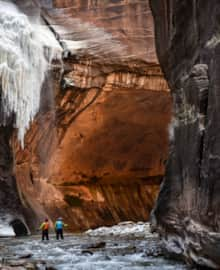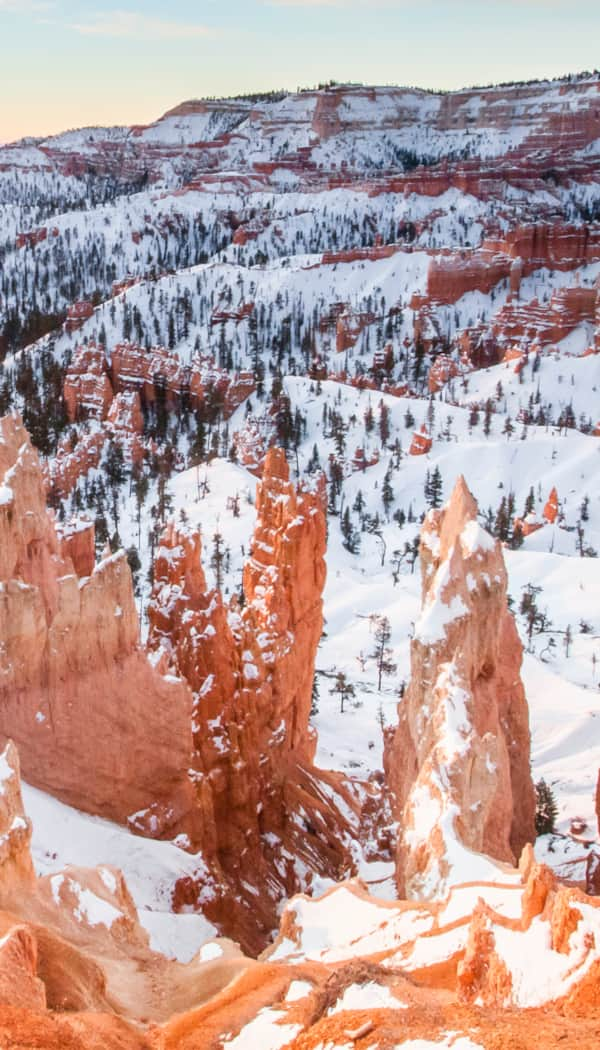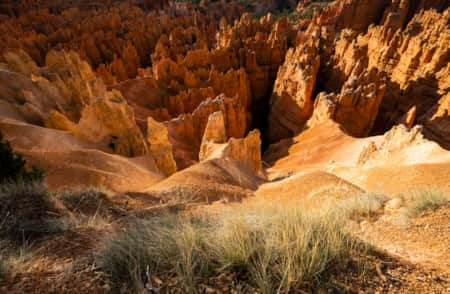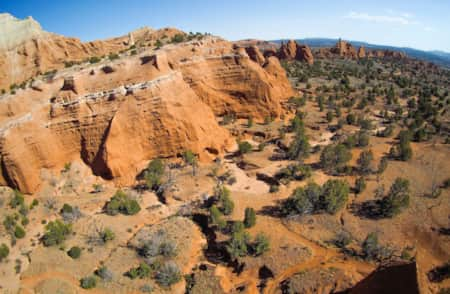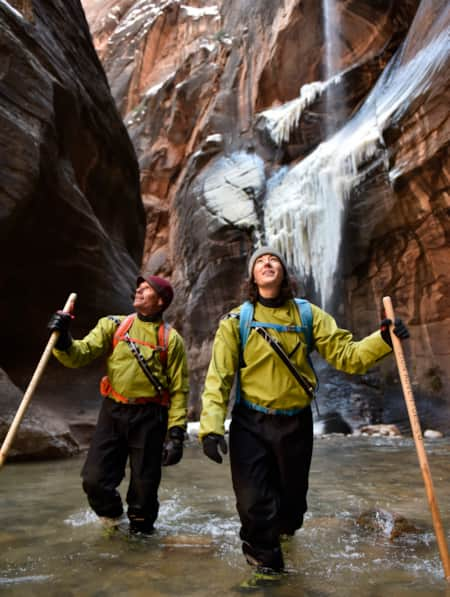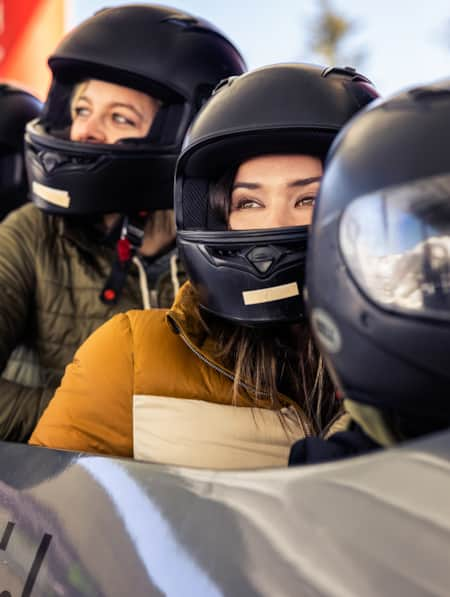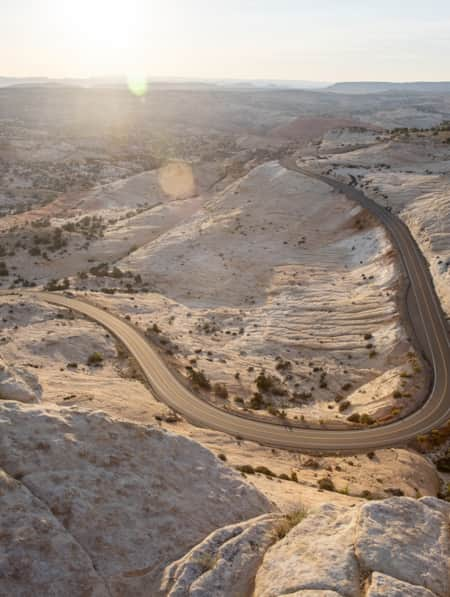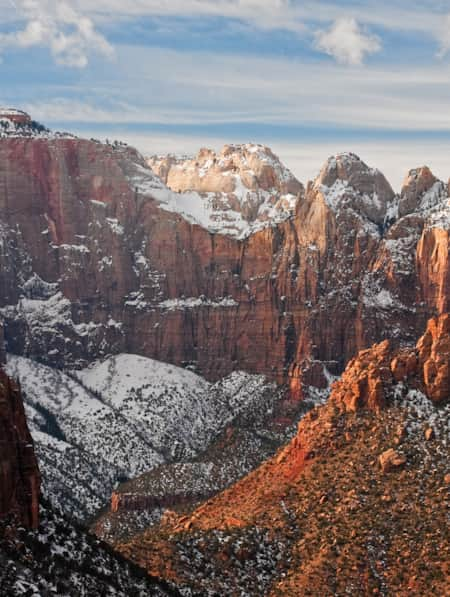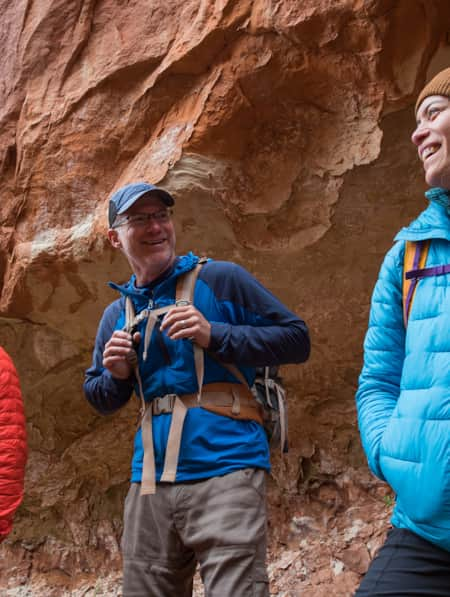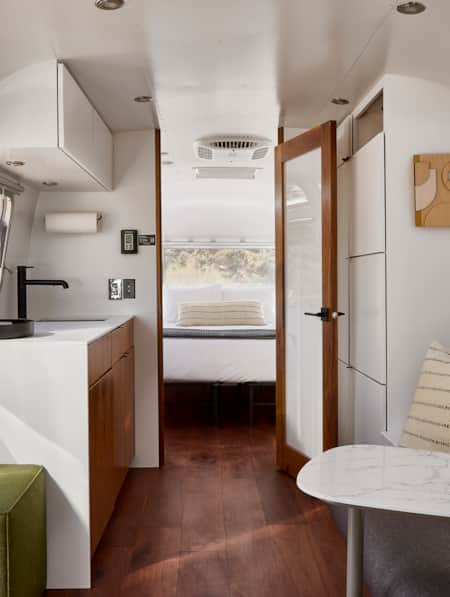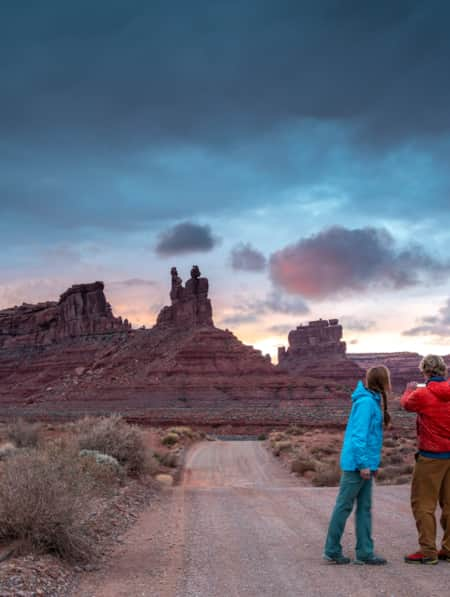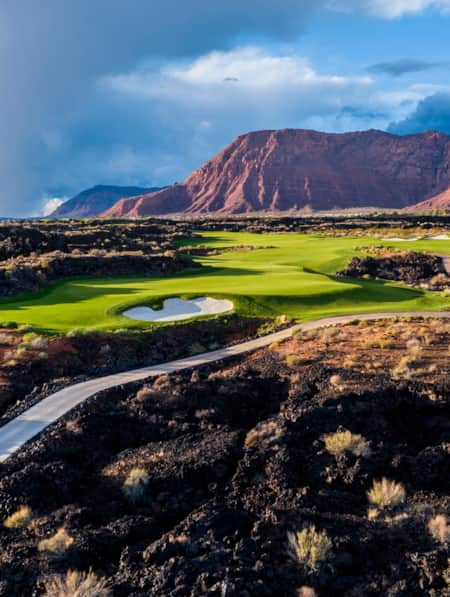Winter in the Bryce Canyon Area: Hiking, Cross-Country Skiing and Snowmobiling
Learn more about why Bryce Canyon and the surrounding areas are the perfect place for winter hiking, cross-country skiing and snowmobiling.
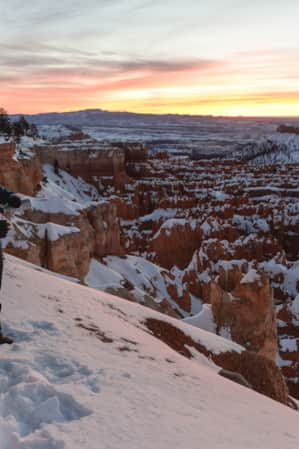
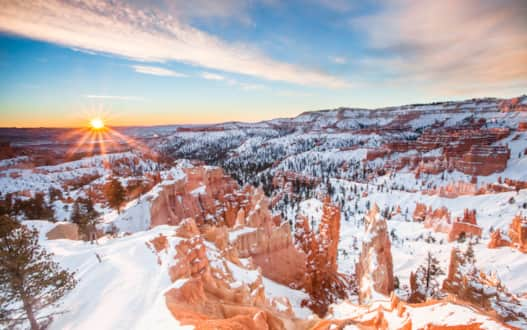
Bryce Canyon can see quite a bit of snowfall, so be sure to consult the rangers on trail conditions and what gear is appropriate.
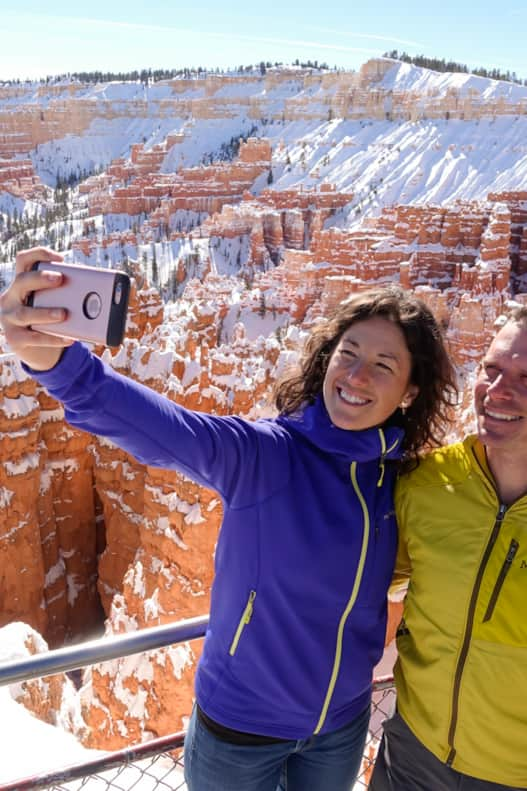
Capturing the snow-dusted backdrop of Bryce Canyon's Sunset Point.
Photo: Hage Photo
Get Your Snow Hiking Gear
Hiking Boots
Your light trail hikers won’t cut it. You’ll want a breathable, waterproof boot with a sturdy, super-grippy sole. And high quality winter hiking socks are essential to pair with that footwear.
Day Pack
You’ll need a waterproof (or at least resistant) pack for your Bryce Canyon winter adventure with enough room to stash all your layers as conditions change. Size matters: Make sure you’ve got room for snacks, water, a beanie, gloves, an extra-mid layer and room to stash your outer layer if things heat up. Hiking in cold weather is about staying dry, so don’t be a hero. If you’re sweating a bunch, stop and peel off a layer or two.
ICEtrekkers or Yaktrax
These inexpensive devices strap onto your boots and act as “chains” to give you traction on packed snowy, icy trails. They are available for sale at the Bryce Canyon Ranger Station and are easily stashed in your day pack if the trail is clear.
Snowshoes and Gaiters
If you’ve arrived following one of Bryce’s periodic blizzards and there is new snow on the trails, you will need snowshoes and gaiters (to keep snow out of your boots). But before you go, consider that the popular Fairyland Loop and Navajo Loop trails get a lot of traffic, even in winter. So, unless you are making first tracks on the trail after a storm, you’ll likely be walking on packed snow and ice, which makes snowshoes more of a hazard than a benefit and not a necessity for your snow hiking gear list. Consult the rangers on trail conditions. You can rent both at Ruby’s Inn Winter Activity Center outside the park.
Trekking Poles
Clawing your way up snowy and, at times, icy trails and across wet, slick rock (which, unlike dry slick rock, is genuinely slick) can be tricky. Some nice, sturdy, collapsible poles, with a snow basket and a rubber tip, will give you an extra place to put the weight down while on slippery descents and can help you if you find yourself in deep snow.
Breathable, Waterproof Jacket and Rain Paints
You’ll want a nice breathable outer layer for your top and bottom that will repel water and let your perspiration out when you’re climbing if you get caught in the rain or snow, which is likely during a Bryce Canyon winter hike. (Read: Stay Warm in Southern Utah: How to Pack for a Winter Trip)
Non-cotton Base Layers
Wicking fabrics are a must; they’ll keep moisture away from your skin as you sweat. After you stop moving, you’ll cool down quickly and want to keep yourself as dry as possible.
Read these additional resources to learn how to travel thoughtfully and fully experience Bryce Canyon National Park.
"Winter cuts the crowds, and while you’ll meet other hikers, you’ll often have this special place all to yourself."
Snowshoeing & Winter Hiking Trails in Bryce Canyon
Bryce Canyon provides amazing winter snowshoeing and hiking opportunities. Many visitors prefer the relatively flat terrain of Paria View Road, Fairyland Point Road and the Rim Trail open sections. Ranger-guided snowshoe hikes are a great way for adults and kids ages 8+ to explore the park while learning about topics like winter ecology and geology.
If the snow is too packed and icy for a snowshoe, try a winter hike with sturdy boots and “over the shoe” traction devices. The park’s two most popular hikes — Fairyland Loop and Navajo Loop — descend into canyons that reveal the magic of walking below the towering hoodoos. (Read: The Best 5 Hikes In Bryce Canyon)
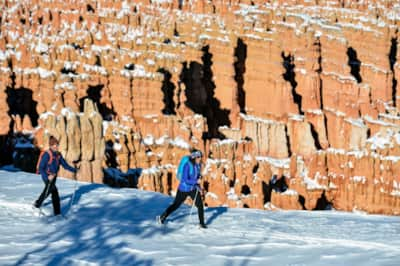
Cross-Country Skiing Trails in Bryce Canyon
While it’s illegal to ski off the rim and into the canyon, there are great cross-country skiing trails above the rim at Bryce Canyon. These trails include sections of the Rim Trail along the edge of the Main Amphitheater, the Bristlecone Loop Trail, Paria Ski Loop and the unplowed Paria View and Fairyland Point roads.
Cross-Country Skiing Gear
If you’re planning a cross-country ski adventure in Bryce Canyon, you need the right gear to keep you warm and safe so you can have a great time exploring this beautiful area.Packing Checklist
- Cross-Country Skis With Bindings
- Cross-Country Ski Boots
- Ski Poles and Straps
Clothing
- Base Layers: Your top and bottom base layers should be a non-cotton, moisture-wicking fabric that will help you stay warm. Look for natural options in wool, silk and bamboo or synthetic fabrics like polyester, nylon and rayon.
- Cross-Country Ski Jacket: Softshell jackets are ideal for cross-country skiing because they are water and snow-repellent while being stretchy and breathable. These jackets allow perspiration to pass through so you don’t overheat.
- Cross-Country Ski Pants: The best pants for cross-country skiing are wind-resistant and breathable. Non-cotton yoga or running pants are a great option to stay warm and maintain a full range of motion. For extra cold days, wear these over a base layer.
- Wool or Synthetic Socks: Avoid cotton socks and look for wool or synthetic socks to keep your feet warm and dry while skiing.
- Gloves or Mittens: To keep your hands toasty, layer glove liners with windproof gloves or mittens. You can also include hand warmers if needed.
- Waist Pack: A waist or fanny pack is a great way to keep essential items (water, sunscreen, phone) without adding excessive bulk.
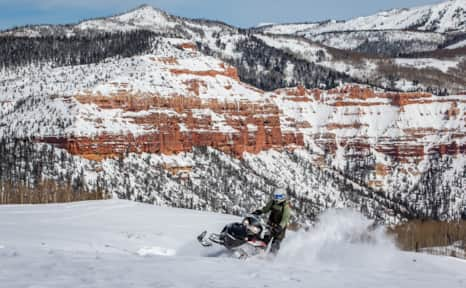
Whether you own a vehicle or need to rent one, Southern Utah provides the perfect landscape for snowmobiling.
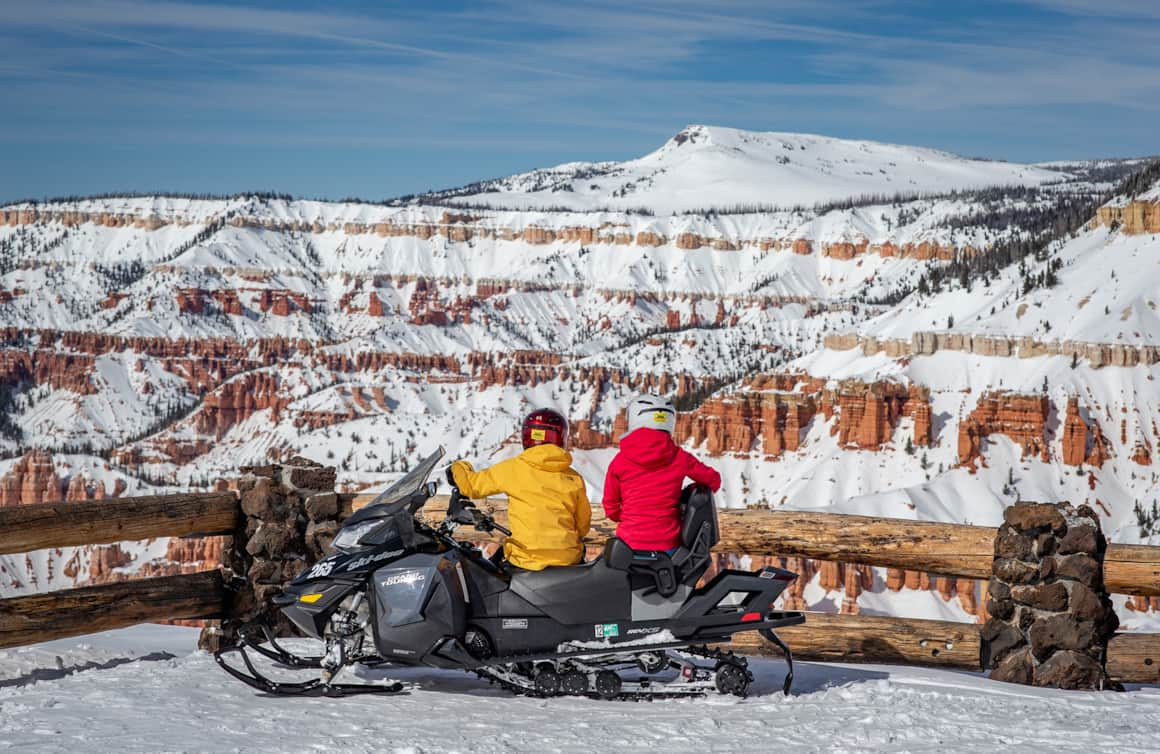
Snowmobiling isn’t allowed in Bryce Canyon, but the surrounding area has over 800 miles of groomed trails to enjoy.
Snowmobiling Near Bryce Canyon
Snowmobiling isn’t allowed in Bryce Canyon, but the surrounding area has over 800 miles of groomed trails to enjoy. Whether you own a vehicle or need to rent one, Southern Utah provides the perfect landscape for snowmobiling.
Cedar Mountain/Dixie National Forest
Duck Creek Village and Panguitch Lake in Dixie National Forest offer great snowmobiling on the Markagunt Plateau, with 225 miles of groomed trails and plenty of play areas.
Brian Head Resort
Single and group snowmobiling are available on marked trails at Brian Head Resort. Guided tours and equipment rentals are available.
Cedar Breaks National Monument
Snowmobiling on the main Cedar Breaks National Monument road is allowed when it’s closed off to regular traffic. The walkway from the visitor center to Point Supreme Overlook is also available for snowmobiling.
East Fork Trail at Ruby’s Inn
Free snowmobiling trails start at Ruby’s Inn and run for 20 miles through Dixie National Forest, offering stunning views of Bryce Canyon. Several play areas are along the Sevier River’s East Fork and around the Tropic Reservoir. Find other trails along the Aquarius Plateau and non-serviced forest service roads.
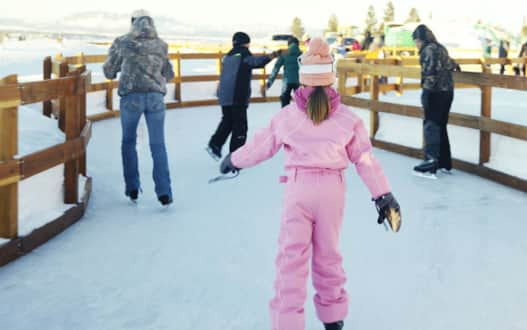
At Ruby's Inn, you can take a glide around their ice ribbon, located just outside Bryce Canyon National Park.
Photo: Courtesy of Ruby's Inn
Ice Skating Near Bryce Canyon
While the Bryce Canyon Winter Festival usually kicks off in February, winter celebrations begin a bit earlier at Ruby’s Inn when their outdoor ice ribbon typically opens at the end of November (weather dependent). You can rent skates at Ruby’s Inn Winter Activity Center.
Explore More
-

Bryce Canyon National Park
An alpine forest with as many red rock hoodoos as trees. At dawn and dusk, mule deer graze the forested plateau along the road into Bryce Canyon.
-

Cedar Breaks National Monument
Cedar Breaks National Monument, 23 miles east of Cedar City, offers a stunning red rock amphitheater, scenic hiking and exceptional stargazing.
-

Kodachrome Basin State Park
Kodachrome Basin covers 2,240 acres of canyon country and is surrounded by Grand Staircase–Escalante National Monument on three sides.
